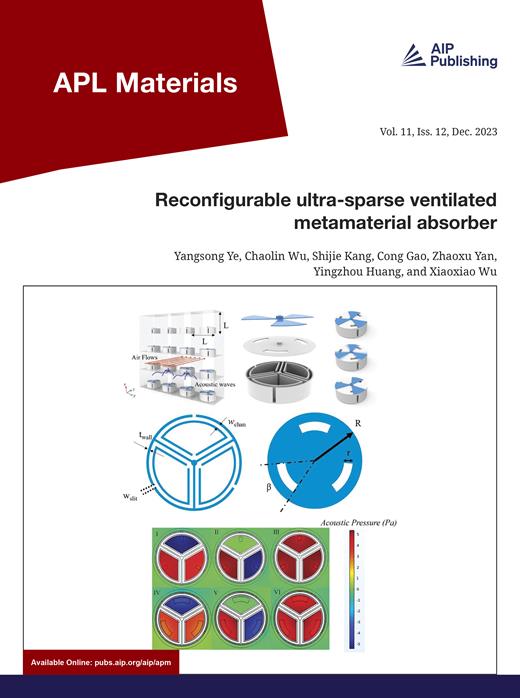Structural, optical, and electrical characterization of TiO2-doped yttria-stabilized zirconia electrolytes grown by atomic layer deposition
IF 5.3
2区 材料科学
Q2 MATERIALS SCIENCE, MULTIDISCIPLINARY
引用次数: 0
Abstract
Electrolyte material optimization is crucial for electrochemical energy storage devices. The specific composition and structure have an impact on conductivity and stability, both of which are essential for efficient device performance. The effects of controlled incorporation of TiO2 into a Yttria-Stabilized Zirconia (YSZ) electrolyte using the atomic layer deposition (ALD) technique are investigated in this study. The surface chemical composition analysis reveals variations in the Ti oxidation state and a decrease in the O/(Zr + Y + Ti) ratio as TiO2 concentration increases. The formation of acceptor states near the valence band is proposed to reduce the bandgap with the Fermi level. The structural properties indicate that as TiO2 concentration increases, surface homogeneity and crystallite size increase. The contact angle with water indicates a hydrophobic behavior influenced by surface morphology and potential oxygen vacancies. Finally, electrical properties, measured in Ru/TiO2-doped YSZ/Au capacitors operated at temperatures between 100 and 170 °C, showed that the TiO2 incorporation improved the ionic conductivity, decreased the activation energy for conductivity, and improved the capacitance of the cells. This study highlights the importance of the ALD technique in solid-state electrolyte engineering for specific applications, such as energy storage devices.通过原子层沉积法生长的掺杂 TiO2 的钇稳定氧化锆电解质的结构、光学和电学特征
电解质材料的优化对电化学储能设备至关重要。特定的成分和结构会对电导率和稳定性产生影响,而电导率和稳定性对于设备的高效性能至关重要。本研究利用原子层沉积(ALD)技术研究了在钇稳定氧化锆(YSZ)电解液中可控加入 TiO2 的效果。表面化学成分分析表明,随着 TiO2 浓度的增加,Ti 氧化态发生变化,O/(Zr + Y + Ti)比值下降。在价带附近形成的受体态被认为会随着费米级的提高而减小带隙。结构特性表明,随着二氧化钛浓度的增加,表面均匀性和晶体尺寸也会增加。与水的接触角表明,疏水行为受到表面形态和潜在氧空位的影响。最后,在温度为 100 至 170 °C、掺杂 Ru/TiO2 的 YSZ/Au 电容器中测量的电特性表明,TiO2 的加入提高了离子导电性,降低了导电活化能,并改善了电池的电容。这项研究凸显了 ALD 技术在固态电解质工程中的重要性,可用于储能设备等特定应用。
本文章由计算机程序翻译,如有差异,请以英文原文为准。
求助全文
约1分钟内获得全文
求助全文
来源期刊

APL Materials
NANOSCIENCE & NANOTECHNOLOGYMATERIALS SCIE-MATERIALS SCIENCE, MULTIDISCIPLINARY
CiteScore
9.60
自引率
3.30%
发文量
199
审稿时长
2 months
期刊介绍:
APL Materials features original, experimental research on significant topical issues within the field of materials science. In order to highlight research at the forefront of materials science, emphasis is given to the quality and timeliness of the work. The journal considers theory or calculation when the work is particularly timely and relevant to applications.
In addition to regular articles, the journal also publishes Special Topics, which report on cutting-edge areas in materials science, such as Perovskite Solar Cells, 2D Materials, and Beyond Lithium Ion Batteries.
 求助内容:
求助内容: 应助结果提醒方式:
应助结果提醒方式:


